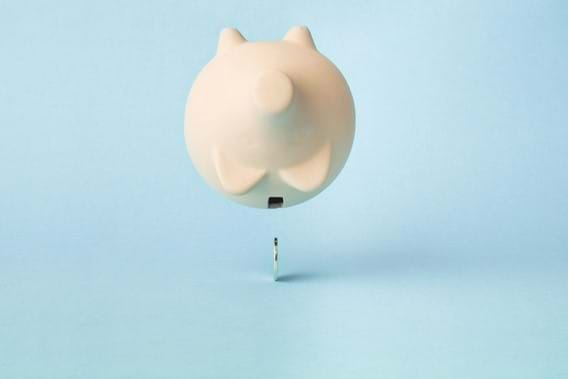
What’s the Smartest Way to Make RESP Withdrawals?
(Updated―1st published February 13, 2018)
You’ve been contributing to your child’s registered education savings plan (RESP) for years, and now you’re ready to start using those funds. Read on for strategies to make the most of your investment.
But first, check out our short animated guide, which summarizes, in under two minutes, the key considerations when withdrawing funds from your RESP.
When is the best time make a withdrawal?
As soon as your child has proof of enrollment in a postsecondary program, you can begin disbursement. We recommend that you ask your child how many years they intend to study. An RESP can remain open for 35 years, so you don’t have to withdraw it all at once. For example, if your child intends to follow a “regular” learning path (two years of CEGEP and three years of university), you can spread the withdrawals over that period. That way, you’ll have funds at your disposal the whole time they’re in school.
Contact us today to discuss the best withdrawal strategy for your situation.
What’s the best withdrawal strategy?
From a more technical standpoint, some withdrawal strategies are better than others. Of course, each case is unique, but in general, withdrawing your funds in the following order is a good approach:
- EAPs (grants and accumulated income): It usually makes more sense to withdraw EAPs first. This allows your beneficiary to receive 100% of the grants accumulated in their name. If the beneficiary doesn’t pursue postsecondary studies or drops out, the grants will have to be returned to the government.
- Should the beneficiary discontinue their studies, the subscriber may still be able to use the accumulated income by withdrawing it or transferring it to an RRSP, under certain conditions.1
- Capital: The amount invested in the RESP continues to grow tax-free as long as it remains in the account. It may be to your advantage to hold on to it as an additional education fund or to reinvest it for the younger children in the family.
Watch out for taxes
Whatever your withdrawal strategy may be, taking everything out at once is generally not recommended. Tapping into an RESP also requires some tax planning. While the capital invested by the subscriber is returned to them tax-free, the same can’t be said for the beneficiary’s EAPs, which are taxed in the student’s name.
Since students typically only work part time and have limited income, they will likely pay little to no tax. Remember, though, that EAP amounts must be claimed in addition to reported income. Withdrawals should therefore be planned carefully, especially for students with more income.
Who makes RESP withdrawals?
It’s up to the subscriber (parent, grandparent, loved one) to make withdrawals from the RESP and decide how to allocate the money throughout the beneficiary’s school career.
Which amounts go to the beneficiary and which to the subscriber?
Invested capitalContributions made by the subscriber |
Educational assistance payments (EAPs)Government grants and earnings on contributions and grants |
| Belongs to the subscriber, i.e., the person who made the contributions (parent, grandparent, loved one). | Belong to the beneficiary (student). |
| Isn’t taxable. |
Are taxed in the hands of the student and must be added to their income tax return for the year in which they're paid. DO NOT affect the calculation of student financial assistance (loans and bursaries). |
|
Can be withdrawn all at once or in several installments, according to the subscriber’s needs and goals.1 If a withdrawal is made BEFORE the student’s postsecondary enrollment, government grants have to be returned. So, it’s better to wait until you have proof of enrollment in hand before withdrawing any capital. |
Full-time studies: Withdrawals are limited to $8,000 during the first 13 weeks of enrollment in a qualifying postsecondary program. After that, you may request any additional amount deemed appropriate1, up to the annual limit set out in the Income Tax Act (Canada).*
Part-time studies: Withdrawals are limited to $4,000 for every 13-week period of enrollment. |
*The amount for 2025 is $28,881. It is indexed annually.
A few rules for RESP withdrawals
To receive EAPs, the beneficiary must:
- Be enrolled in a qualifying educational program, i.e., a postsecondary program that lasts at least three weeks in a row, with at least 10 hours of instruction or work per week
OR
- Be at least 16 years old and enrolled in a specified educational program, i.e., a postsecondary program that lasts at least three consecutive weeks and that requires the student to spend not less than 12 hours per month on courses2
What if your child doesn’t pursue studies?
If your beneficiary doesn’t enroll in a postsecondary program, don’t panic! Your savings will be reimbursed, subject to investment risk.3 Government subsidies, however, will have to be returned.
Other options are available to you, under certain conditions:4
- Transfer the RESP to another beneficiary
- Transfer accumulated income to your RRSP
- Request an accumulated income payment (AIP)
RESP withdrawals can sometimes seem complicated, but various strategies are available to you. An educational savings plan representative will be delighted to answer all your questions and give you the support you need.
Questions about RESP withdrawals?
1. For security reasons, certain conditions and/or restrictions may apply.
2. See our prospectus.
3. Savings invested in treasury bills, government bonds, and high-quality companies. Some conditions apply. See our prospectus.
4. For full details, see our prospectus.



